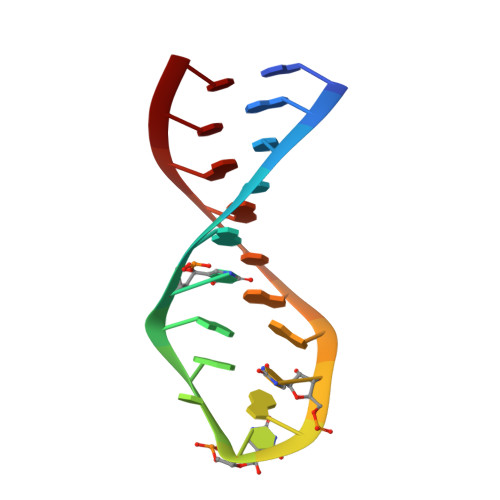Structure modulation of helix 69 from Escherichia coli 23S ribosomal RNA by pseudouridylations.
Jiang, J., Aduri, R., Chow, C.S., Santalucia, J.(2014) Nucleic Acids Res 42: 3971-3981
- PubMed: 24371282
- DOI: https://doi.org/10.1093/nar/gkt1329
- Primary Citation of Related Structures:
2MEQ, 2MER - PubMed Abstract:
Helix 69 (H69) is a 19-nt stem-loop region from the large subunit ribosomal RNA. Three pseudouridine (Ψ) modifications clustered in H69 are conserved across phylogeny and known to affect ribosome function. To explore the effects of Ψ on the conformations of Escherichia coli H69 in solution, nuclear magnetic resonance spectroscopy was used to reveal the structural differences between H69 with (ΨΨΨ) and without (UUU) Ψ modifications. Comparison of the two structures shows that H69 ΨΨΨ has the following unique features: (i) the loop region is closed by a Watson-Crick base pair between Ψ1911 and A1919, which is potentially reinforced by interactions involving Ψ1911N1H and (ii) Ψ modifications at loop residues 1915 and 1917 promote base stacking from Ψ1915 to A1918. In contrast, the H69 UUU loop region, which lacks Ψ modifications, is less organized. Structure modulation by Ψ leads to alteration in conformational behavior of the 5' half of the H69 loop region, observed as broadening of C1914 non-exchangeable base proton resonances in the H69 ΨΨΨ nuclear magnetic resonance spectra, and plays an important biological role in establishing the ribosomal intersubunit bridge B2a and mediating translational fidelity.
Organizational Affiliation:
Department of Chemistry, Wayne State University, Detroit, MI 48202, USA.














